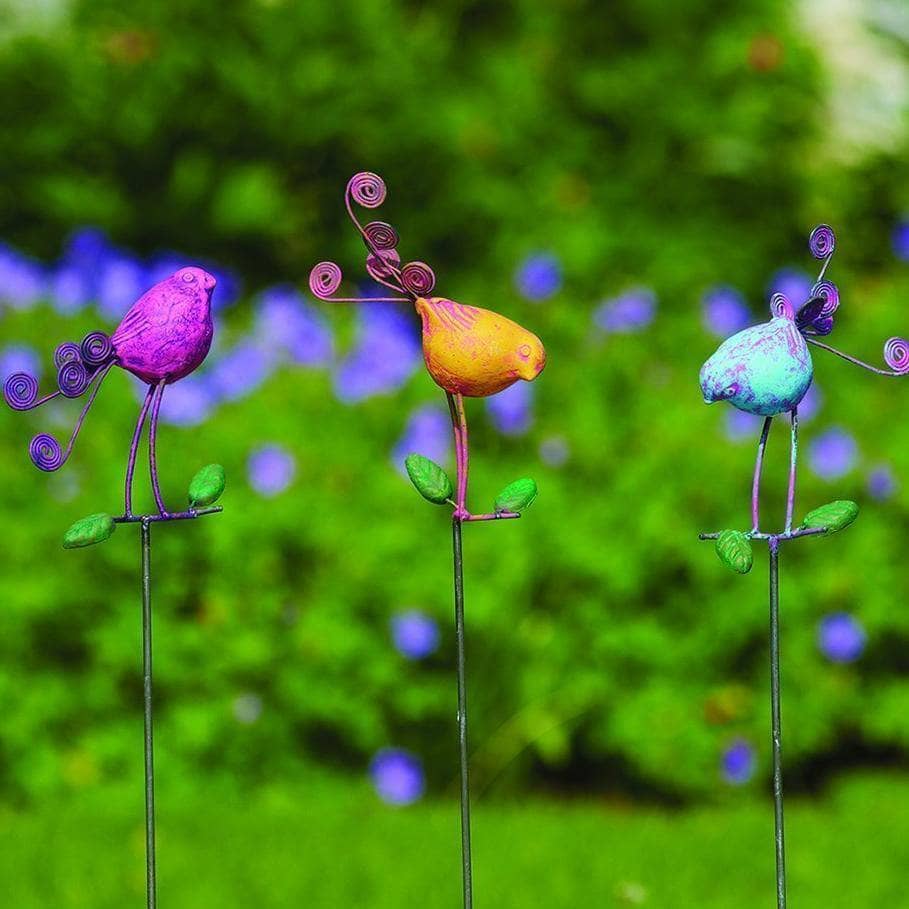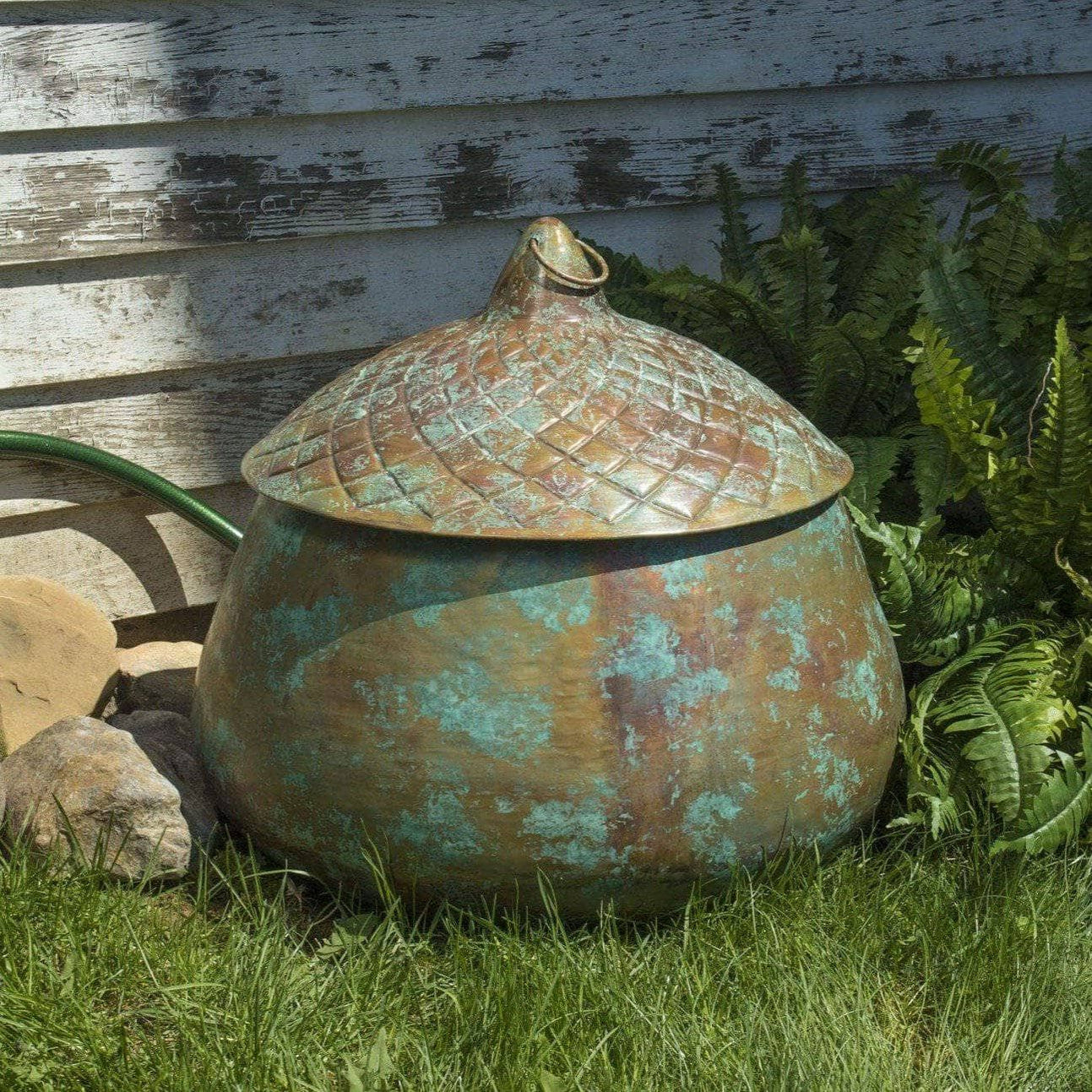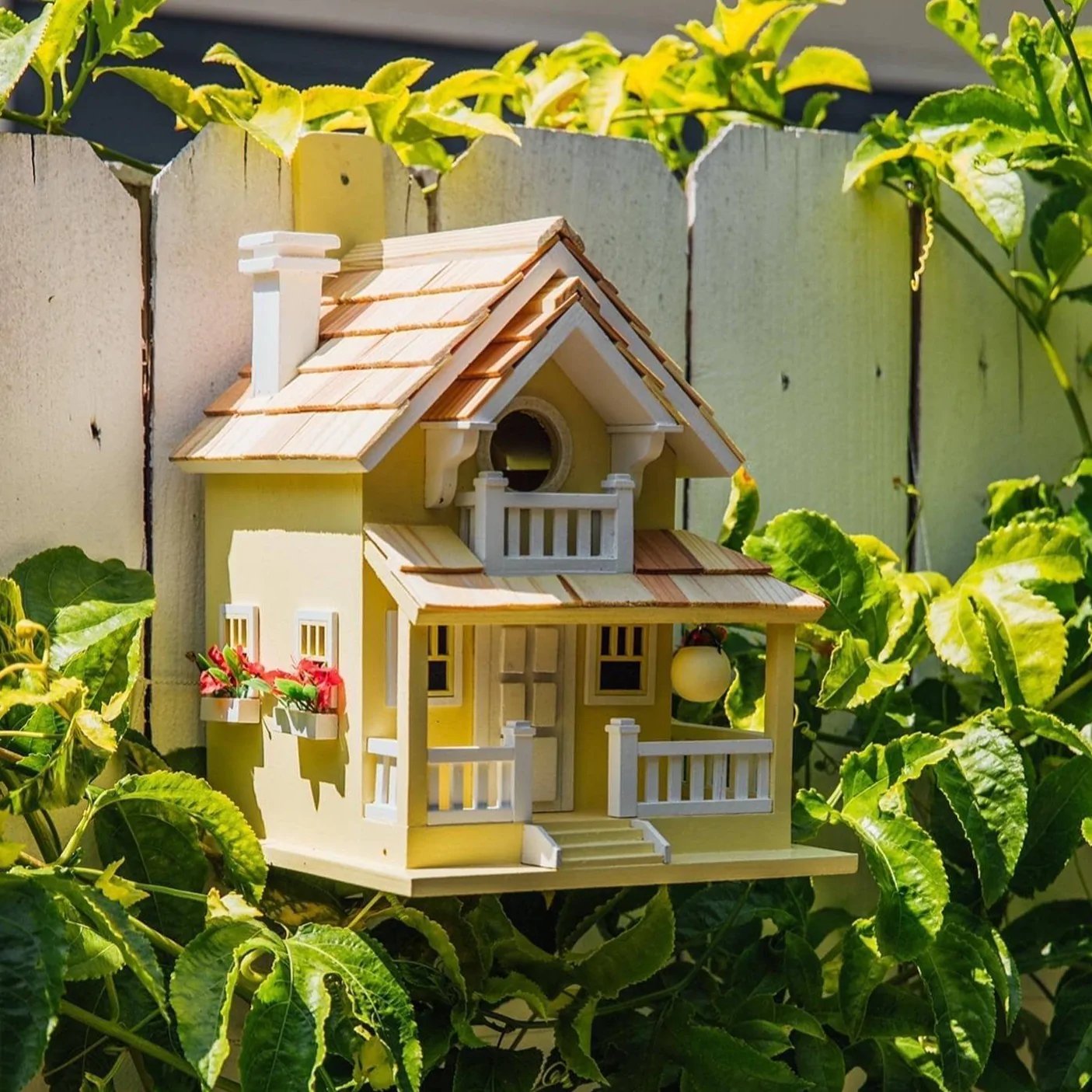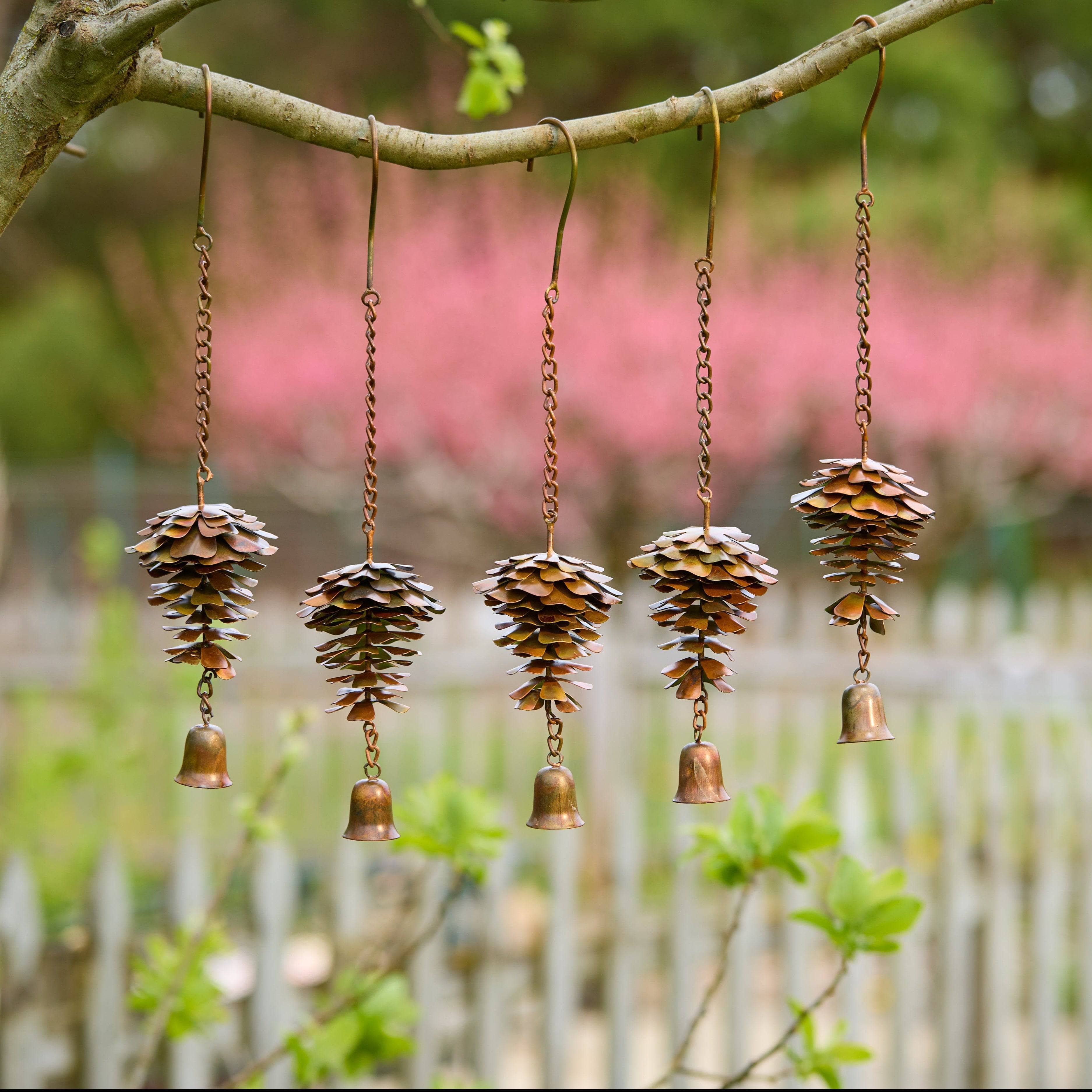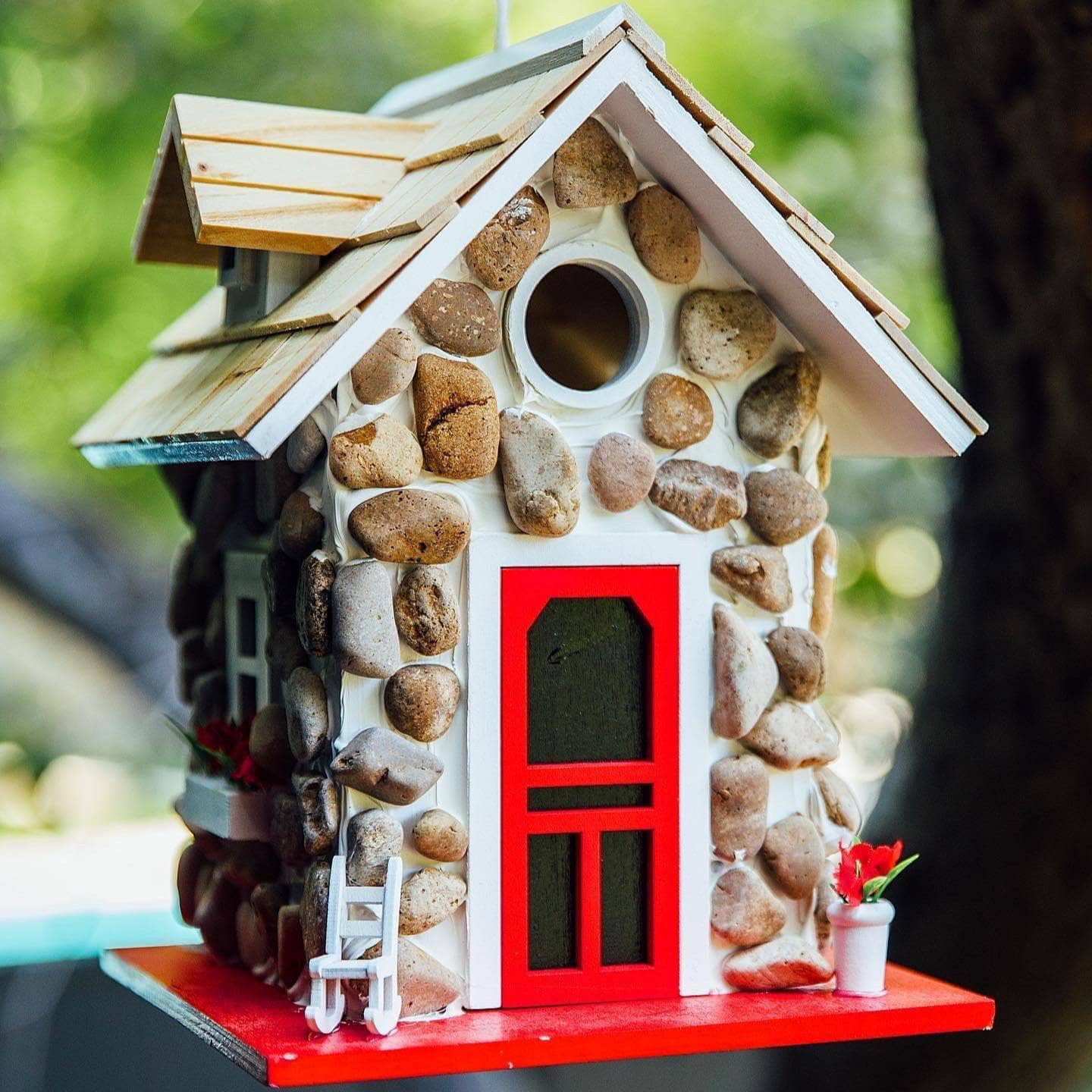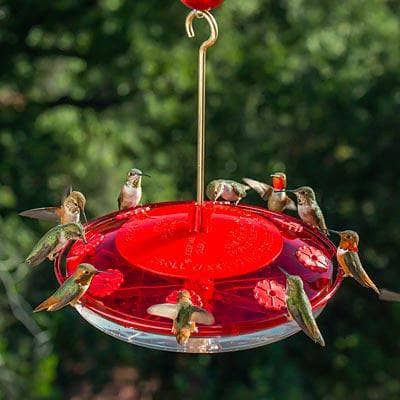
How to Clean a Hummingbird Feeder
Share
Hummingbird feeders are an excellent option for anyone looking to attract beautiful little birds to their garden or backyard. But if you're going to try and attract hummingbirds with a feeder, it's your responsibility to learn to clean a hummingbird feeder, too.
And you've got to keep your feeder clean and hygienic at all times. Not only will maintaining a clean feeder promote more birds to frequent your yard, but it also helps to keep your local population healthy.
So, if you're considering adding a hummingbird feeder to your garden, it's essential to be aware of some of the safety and sanitation practices as well. This article will take a closer look at how to clean a hummingbird feeder properly and why it's essential to keep it clean. We'll also touch on a few tips and tricks to keeping your hummingbird nectar fresher, longer.
Let's dive right in.
Also, check out our How To Keep Ants Out Of A Hummingbird Feeder article.
Why Do You Need to Clean a Hummingbird Feeder?
Hummingbirds thrive in environments where they can feed regularly, but most birds would go without eating rather than drinking bad sugar water. So, to keep your hummingbirds safe and healthy, it's essential to clean hummingbird feeders as often as possible.
- Contamination
- Clogged feeding ports
- Fermentation
- Potential penalties or fines
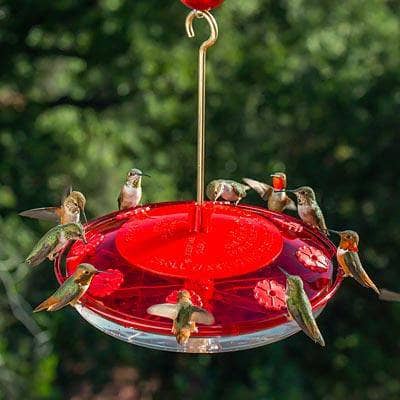
How to Clean a Hummingbird Feeder
Don't be intimidated by some of the structures of hummingbird feeders. For the most part, it's easy to clean hummingbird feeders. Here's a breakdown of exactly how to properly clean the feeder.
What You'll Need
First, you'll want to gather all of the necessary materials to clean hummingbird feeders. Thankfully, most things on the list are everyday household items.
- Hummingbird feeder
- Unscented dish soap
- Bucket (optional)
- Bottle brush, cleaning mop, or another cleaning device
- A spoonful of uncooked rice (optional)
- Drying rack (optional)
How to Clean Hummingbird Feeder(s)
Step 1: Empty the Feeder
To start the cleaning process, you'll want to be sure to empty any excess nectar from your hummingbird feeder. Give the feeder a quick rinse with hot water to flush it out thoroughly. You'll never want to keep the nectar to reuse because it can spoil. It's safest to dump any nectar during your cleanings.
Step 2: Disassemble Feeder
As much as possible, take apart your feeder. Some hummingbird feeders are more intricate than others, with multiple different pieces to remove and clean. The more you can disassemble from the feeder, the more thoroughly you will be able to clean it.
Step 3: Soak the Feeder
Mix the unscented dish soap with hot water in a bucket, or sink, to create a mild cleaning detergent. Once your bucket is filled with the soapy solution, place all pieces of the feeder in to soak for one to two hours. The soaking process ensures any nectar or mold residue accumulated will be easier to remove in the scrubbing process.
Step 4: Scrub the Feeder
Using whichever cleaning tool you have, such as a bottle brush or cleaning mop, scrub the feeder thoroughly after it has soaked. Be sure to clean all pieces of the feeder, focusing intently on any that have accumulated any signs of mildew.
If you have any hard-to-reach places that your cleaning devices can't reach, put a spoonful of uncooked rice and a dab of unscented dish soap into your feeder. Fill it two-thirds of the way with warm or hot water and shake the rice around in the feeder. This technique should help to loosen any pesky debris.
Step 5: Rinse Thoroughly
Once you've successfully scrubbed your feeder clean, you'll want to empty any remaining soapy solution. Rinse the hummingbird feeder with cold water, ensuring any soap, dirt, or mildew residue is completely gone. Hummingbirds can sense soap in their nectar, so be sure to rinse carefully.
Step 6: Dry the Feeder
Lay the pieces of your hummingbird feeder out or place them into a dish drying rack to allow them to air dry completely. If you're in a hurry, you can use a dish towel to dry them.
Step 7: Reassemble the Feeder
When you are sure all of the pieces are dry, you can reassemble your feeder, fill it with nectar, and enjoy!
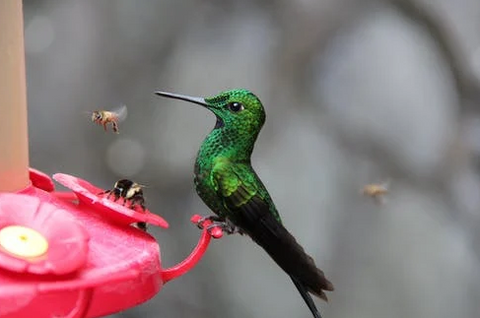
Alternative Ways to Clean Your Hummingbird Feeders
While the dish soap and hot water method is the safest and simplest way to clean out your hummingbird feeders, there are alternative ways too. If, for example, you have multiple feeders to clean, the soaking method can become time-consuming. Here are a couple of other ways to clean a hummingbird feeder, along with some considerations.
Vinegar
Distilled white vinegar is an excellent substitute for unscented dish soap in the method listed above. Swap out the soap for vinegar, using two parts water for every one part vinegar. Just make sure everything is completely dry before reassembling, and your hummingbirds will be safe.
Dishwasher
Some hummingbird feeders are dishwasher safe making cleaning a breeze, especially when handling multiple feeders. This cleaning method is only recommended for general cleans, though, and should not be the preferred method for feeders showing any signs of mold. Also, make sure that your hummingbird feeder is dishwasher safe before finding out the hard way.
How Often Do You Need to Clean Hummingbird Feeders
Cleaning hummingbird feeders seems easy enough, right? The real trick is knowing how often you need to clean feeders to keep them hygienic for the birds. As a general rule of thumb, you should be replacing the nectar every three to five days, cleaning out the feeders at a minimum once a week.
Again, this is just a general rule of thumb, and there is no specific timeline to follow. Just remember, you can never clean out your feeder too often. So, if ever in doubt, give it a good cleaning to be on the safe side.
Keeping that in mind, it's important to note that a few different factors might increase or slow down the frequency in which you need to clean out your feeder.
Temperature
As you can imagine, the hot summer weather can spoil nectar quickly than in cooler months. A combination of both sunlight and humidity can increase the fermentation rate of the nectar in the feeders. Depending on how hot and humid your region is, you might have to clean out your feeder every couple of days.
Number of Birds
The number of birds that stop by your hummingbird feeder can also impact how frequently you need to clean it. If you have a few that stop by from time to time, you don't have to worry too much. On the other hand, if you have a whole flock that frequents your feeder, you'll need to clean it more often. In these circumstances, they'll also be drinking the nectar more rapidly, so you can clean out your feeder with every refreshing.
Related: How to Choose a Bird Feeder
How to Know if Your Nectar Is Spoiled
Aside from the factors that contribute to the frequency of cleaning your hummingbird feeder, you'll also want to keep an eye on the hummingbird nectar to make sure it hasn't spoiled. If you ever have reason to believe your nectar has spoiled, you should immediately dump it and clean your feeder thoroughly. Here are a few indications that your nectar has spoiled.
- Cloudy or milky looking nectar
- Floating fibers in the nectar
- Black spots anywhere in the feeder appear
- Crystallization around the feeding ports
- Floating insects
To be extra safe, when in doubt, throw it out! It's always better to be safe than sorry when it comes to feeding these precious birds.
5 Tips to Keep Your Nectar Fresh Longer

While some factors are out of your control, such as climate and the number of birds, there are other tips you can follow to help keep your nectar fresh longer.
1. Location
As best as you can help it, try to place your hummingbird feeder in a shadier, cooler area. Since heat and humidity play a significant role in the fermentation process, try to keep your feeder that can avoid the hot mid-afternoon sunlight if you can.
2. Size
The size of your feeder can play a role in the quality of your nectar. While we're sure you'd like to see dozens of hummingbirds visit your feeder daily, keep an eye on how many birds stop by. If you can, downsize your feeder, ensuring you swap out your nectar more frequently.
3. Cleaning Frequency
Every time you refill your nectar in your feeder, give it a good washing. This is an excellent practice to follow and will help to prolong the life of your nectar every time.
4. Nectar Defender
Nectar defender is an all-natural product you can add to your nectar mix to help extend its life. This product uses copper, which helps in slowing the formation of mold, fungus, and bacteria. Some hummingbirds can be sensitive to the copper taste, so be careful with how much you use.
5. Design
The design will determine how hard it is to clean a hummingbird feeder. The more complex the design, the more likely you will miss nooks and crannies where bacteria can begin to build up. Opt for a simple design that you can clean thoroughly.
Feeder Tips
When you start shopping around for hummingbird feeders, be sure to keep in mind the amount of cleaning you will need to be doing. Knowing what challenges you might face, it's crucial to know some of the different feeder options out there in terms of their ease of cleaning.
Easiest Feeders to Clean
The Jewel Box Window Hummingbird Feeder is an excellent option for anyone looking for an easy clean. The design of this feeder is similar to a jewelry box, with a hinged lid making it easy to scrub out the nectar tank. This hummingbird feeder holds up to eight ounces of nectar and attaches to your window via a suction cup with three flower feeders.
Hardest Feeders to Clean
Feeders with small feeding reservoirs that do not remove from the feeder tend to be the most challenging to clean. Look for options that have removable feeding pieces for simpler cleaning capabilities. Also checkout our when to clean a birdhouse article.
Dishwasher Safe Feeders
Glass hummingbird feeders are practical options that tend to be dishwasher safe. This Pixie Hummingbird Feeder, for example, is made from blown glass and holds up to four ounces of nectar with one feeding flower.
Where to Buy Different Types of Hummingbird Feeders
When purchasing a suitable hummingbird feeder for your home, it's essential to consider the cleanliness factor. Now that you have a better idea of what this entails, you can begin searching for one of your own. There's a hummingbird feeder out there for everyone that fits your ideal style and budget.
For the Thrifters
Finding hummingbird feeders on a tight budget is entirely doable. Start looking at your local garage sales, flea markets, or swap meets to start. If you're still having trouble, you can always browse antique shops to see what unique pieces you might find.
For the Cyber Shoppers
One of the perks of living in the Internet era is that you can easily shop for anything your heart desires from the comforts of your own home. The perfect hummingbird feeder is just a few clicks away. You can even check out online marketplaces, like Facebook Marketplace or OfferUp, for local deals in your area.
Happy Gardens Store
If you don't want to compromise quality while shopping online for affordable deals, the Happy Gardens Store should be your one-stop shop for all of your garden needs. Choose from the highest-level craftmanship, and the cutest hummingbird feeders available on the market.
About Happy Gardens
Shop through our online collection at Happy Gardens, where you can find a wide assortment of artistically constructed garden decor and merchandise to fill any outdoor space. Rest assured, Happy Gardens has exactly what you're looking for, whether you've been searching for that timeless hummingbird feeder, abstract wall art piece, or quaint rain chain. After all, you will only find pieces that have been handcrafted and selected with love on our site.
Daydream about your ideal garden design as you browse through our countless unique collections, including various adored and top-rated products. Happy Gardens has everything you need from original garden ornaments and statues, inspired rain gauges, one-of-a-kind spinners, and more to flawlessly accent your outdoor areas. Our latest offering includes our very own line of merchandise, with fun and exciting gifts available year-round. Shop for the best coffee mugs, wine glasses, and tote bags for the garden lovers in your life.
Stay up to date with the latest and greatest at Happy Gardens by joining our mailing list. If you're looking to add some garden inspiration tips and tricks to your newsfeed, follow us on Instagram, Facebook, and Pinterest.
We've got you covered if you're not quite sure where to start. If you require assistance in selecting the quintessential garden art piece or designing the perfect layout for your outdoor decor, reach out to us via chat. We're here to help!
